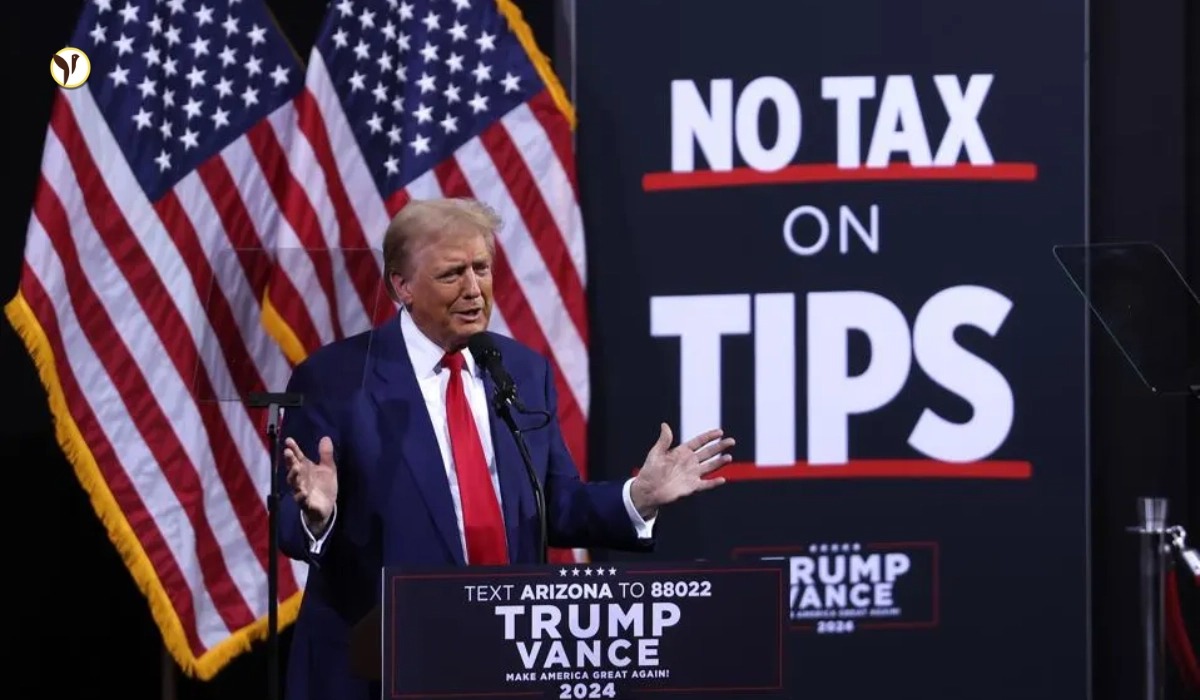No Tax on Overtime: “Changes in Labour Policy since 2025”
In 2025, the US labor market faces increasingly complex challenges: wage stations, the rise of the gig economy, and the rights Extended discussions on employee and income inequality. One of the most urgent topics in the economic equity discussion is the topic of overtime payments and taxes on these incomes. At this point, US employees are subject to overtime wages, standard income tax rates, leaving behind some of the additional salaries that are often difficult to acquire. In a year marked by demands for higher safeguards and fairer taxation, the idea of eliminating taxes with overtime has important political debate. Advocates argue that removing taxes during overtime will strengthen the middle class and improve financial security and productivity incentives. It is also the current situation in the US labor market, and the challenges facing 2025 wages have long been an integral part of the American work system, particularly for employees in industries such as retail, manufacturing and healthcare. It is as follows transportation. According to the Fair Labor Standards Act (FLSA), employees who have not been released (i.e., meaning overtime) are entitled to “a half hour” for more than 40 working hours per particular week.
This means that if an employee is usually making USD 20 per hour, they should be compensated at a price of $30 per hour for overtime. Despite recognizing overtime as an important factor in employee compensation, the tax system treats normal wages and other things. This means that overtime will be subject to the same income tax rate as the federal government and state governments. For many employees, this leads to situations where an increase in overtime victory does not lead to so many payments at home due to the progressive nature of the income tax system.
Overtime Taxation:
Overtime Taxation has been a point of conflict for decades. Taxes on normal income are an accepted standard, but taxation on overtime content has sparked criticism for several reasons:
Effective payment reduction:
To meet financial needs For many employees who rely on overtime, tax revenues on this extra can be denied a large portion of the profits. This applies to employees who have not acquired any important basic content, but who rely on a critical portion of their overtime income. In these cases, employees can manage their overtime income with sentences higher than normal wages, and have significantly less money than expected. Tax burdens also serve as an incentive for time. If an increase in overtime income is taxed significantly, employees may not be willing to adopt additional changes, especially if the financial gains are not as great as expected. This dynamic can affect both the employee’s financial wells and the employer’s ability to meet operational needs Income workers. Those who are already in the lower tax class will still be taxed at the same interest rate as employees with higher income if they earn overtime. This situation becomes particularly difficult for hourly workers who may not have the option to spend time spending time. Progressive taxation will help employees accumulate overtime hours, and the majority of their income is taxed. This is considered unfair
Complex Tax Registration:
Taxation of overtime can also make tax registration more difficult. Employees may have difficulty determining the correct tax rate for overtime payments and may be subject to unpaid penalties in the event of fraud. This complexity becomes tax season for many employees who rely on overtime to support their families. The potential solutions to these challenges are to experience rights and specific political leaders. The basic premise of the proposal is simple. It involves completely tax-free overtime and maintaining all the extra income that employees earned over more than 40 hours of work. Such changes will have many positive effects on both employees and the economy
Increased Employee Availability Income:
The main advantage of eliminating taxes on overtime content is available workers. For many people who rely on overtime to do the rounds, it will greatly improve their financial stability. This increase in income helps reduce financial burdens, promote more consumer costs, and reduce some of the stress that employees face with low and middle incomes. In overtime revenue, she rather tends to work longer, as taxes take over additional layers. This can lead to higher productivity levels such as in a variety of industries, particularly in sectors that are heavily based on overtime. B. Healthcare, transportation, retail. Increased labor production could help businesses meet demand and promote general economic growth. By allowing employees to maintain their total overtime payments, these guidelines effectively raise the standard of living for many people who are trying to build prosperity, reduce debt and save the future. This helps reduce income inequality and provide a fair system for employees in various industries easier
This reduces confusion and frustration during the tax season, especially for employees who don’t have the resources to hire tax professionals. By eliminating additional tax layers, the process becomes more transparent and fair. Through more money in the pockets of working Americans, this policy could stimulate consumer spending, which becomes an important part of the US economic activity. Employees are increasing the amount of available income, allowing them to spend more on goods, services and experience, and drive demand across the economy. Without stopping additional full-time employees. This could lead to cost savings for businesses, especially in sectors where demand is cyclical or require overtime to cover peak work times. Increased overtime payments allow employees to rely on social security networks such as unemployment benefits, food brands and other welfare programs, leading to reduced government spending.
The proposal to eliminate taxes is likely to be disadvantaged and criticized, providing more potential benefits to overtime, but not without criticism. Some economists and political experts have expressed concern about the long-term tax effects of such policies government. Given the fact that overtime is a significant portion of the total income of many employees, the removal of taxes on these incomes could lead to a significant decrease in state income. This could strengthen the federal government’s fiscal deficit and require reductions in public costs and new taxes elsewhere. A pass that may not be the best benefit of the employee.
For example, businesses can encourage employees to take overtime more frequently, No tax to overtime, leading to employee fatigue, burnout, or exploitation. It does not necessarily address the underlying issues of wage stagnation in many sectors. Some workers, especially those who are not entitled to overtime, do not see the advantages of such an order. As a result of the evolution of 2025, the proposal to eliminate taxes from overtime is in conversations about economic justice and fairness. By allowing workers to maintain all the money they earn over time, the policy provides immediate economic relief to millions of Americans, increasing consumer costs and increasing productivity. By increasing it, it helps to promote the economy.
As with all changes to the guidelines, potential benefits must be weighed against long-term tax effects, and careful consideration must be given to prevent employees from being used. It must be. Politicians are an important part of wider work reforms that must strengthen their employees, reducing income inequality and building a more sustainable and fair economy. Although there is a political will to make this possible, his introduction sparked important conversations about the future of work, creating a more integrated and fair economic system in America.
Trump’s $4.5 trillion cut will survive the house vote: Historical Steps in US Economic Policy
In important political developments, former President Donald Trump’s budget laws have $4.5 trillion on tax cuts, and the House has successfully implemented the impulse to reform the comprehensive budget. Passed and marked a massive milestone. The adoption of this law shows the shift in the US government’s approach to taxation, state spending, and economic growth, along with discussions about tax liability, tax justice, and the possibility of economic animation.
This article deals with the impact of the law, the most important provisions in the partisan distinctions it caused, and what this means for the future of US economic policy.
Background: Trump’s Economic Vision
Donald’s economic policy focuses on tax cuts and deregulation, particularly during the presidency, to reduce stress on businesses and individuals. It was a distinctive feature of Economic growth. Trump’s administrators issued a critical tax reform package in 2017 that cut corporate tax rates, lowered individual tax rates, and designed a more competitive design for the United States at the global stage. Despite his adoption, critics argued that tax cuts disproportionately benefit the wealthiest Americans and businesses, and contribute to an increase in obstacles. The economic vision is a broader framework this time with additional elements related to tax policy. Although Trump is no longer in office, his influence remains strong in the Republican Party, and many of his political priorities have found a second wind in this ambitious form of law. At the heart of Trump’s budget calculations, there are significant tax cuts in the broad Schwadd of American society, focusing on corporate tax cuts, individual tax cuts, and incentives for economic growth due to private sector expansion.
Corporate Tax Reductions:
The main element of the proposed invoice is its approach to corporate tax. The corporate tax cuts aim to reduce the corporate tax rate to 15% from its current level. This is a significant decrease compared to the 21% interest rate determined as part of the Tax Cuts and Employment Act in 2017. The aim is to improve the competitiveness of US companies in the global market by reducing the costs of business activities and encouraging companies to invest in expansion. Innovation and job creation, Research and development. Through incentives to invest in domestically invested companies, Trump wants to promote long-term growth and job creation.
Individual Tax Reductions:
The $4.5 billion calculation also includes provisions for individual taxpayers that focus on reducing the tax burden on medium-distance families. The proposed cuts would lower tax rates for most tax classes, including those earning low and medium incomes, in the hopes of stimulating consumer costs, promoting economic activity and promoting savings. . Income tax rates at all levels. Tax clips will see a massive cut that will benefit the majority of American workers. The goal is to increase the revenue available and increase the costs of products and services. This is expected to contribute to economic growth for a short period of time. US tax laws eliminate certain deductions, while also eliminating new tax credits aimed at stimulating family growth and child-rearing. The law provides essential deductions for families with children, making it more financially profitable for parents to stay in the workforce and raise their families at the same time.
Changes to Property and Capital Gain Tax, The law covers two important tax policy areas:
Real Estate Tax and Capital Gains Tax. The Real Estate Tax, which applies to the relocation of prosperity after an individual’s death, is intended to reduce Trump’s proposal. The plan aims to completely eliminate the real estate tax that critics argue. The wealthiest people can make a disproportionate profit and pass large assets to tax-free heirs. Taxes used to earn profits from the sale of assets such as stocks, bonds, real estate, etc. The proposed tax changes aim to simplify this type of income tax law and reduce the effective tax rates for people with higher incomes and investors.
Tax Incentives for Private Sector Innovation:
One of the latest elements Trump proposed is a robust incentive package to promote private-sector innovation. This includes tax credits for businesses investing in states such as artificial intelligence, biotechnology, and clean energy. By providing companies that have participated in technological advancements, the US aims to position them as managers of this growing industry that can contribute to job creation and long-term economic stability.
Tax increases for midrange families provide relief, but most of the benefits probably flows to top earners, businesses and investors. Critics argue that this further increases the gap between the wealthiest Americans and everyone else. Research shows Republicans are primarily supporting the bill, viewing it as a necessary step to strengthen the economy and providing relief for businesses and individuals. Meanwhile, many Democrats and independent voters are skeptical of the plan and fear that he will disproportionately benefit the rich while not doing enough for the middle and working classes. For legislative templates, which highlight the potential for economic growth and job creation. However, there are some economists on the right who have raised concerns about the long-term tax effects of such large tax cuts, especially when considering the major national deficits already.
Also Read This: Apple today announced its largest – Spending commitment, with plans to invest more than $500 billion in the U.S.
Conclusion:
This passage is the passage of Donald Trump’s tax cuts in the House of Representatives 4.5 trillion, reflecting a key moment in US monetary policy. Legislative followers argue that they will expose economic growth, create jobs, and make them more competitive around the world. Meanwhile, critics warn that this will exacerbate income inequality, increase deficits, and disproportionately to the wealthiest Americans. The outcome of this law will likely have a major impact not only on US tax policy but also on the broader economic and political landscape in the coming years. Regardless of their ultimate fate, legislative debates highlight the ongoing challenge of reconciliation of tax responsibilities with economic growth and equity in modern political situations.




